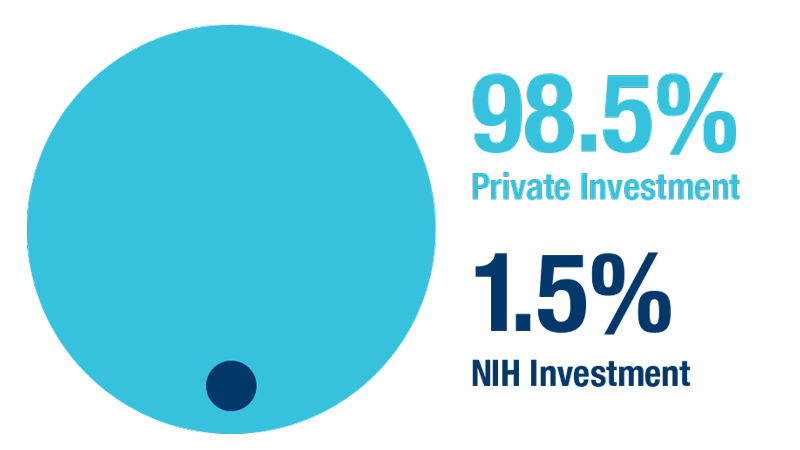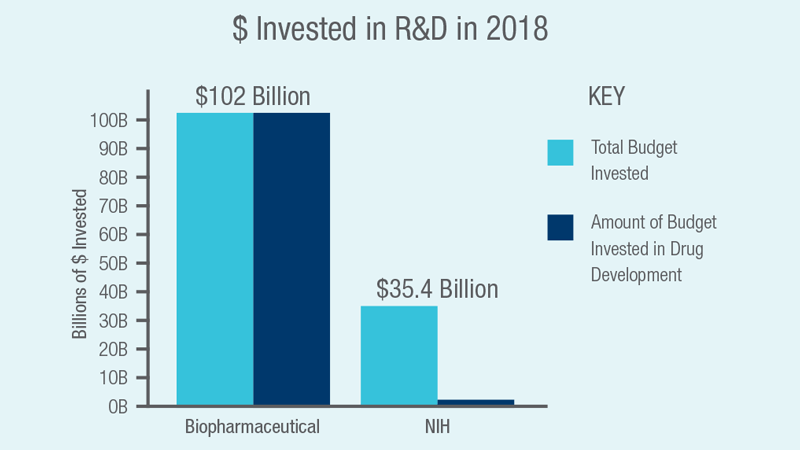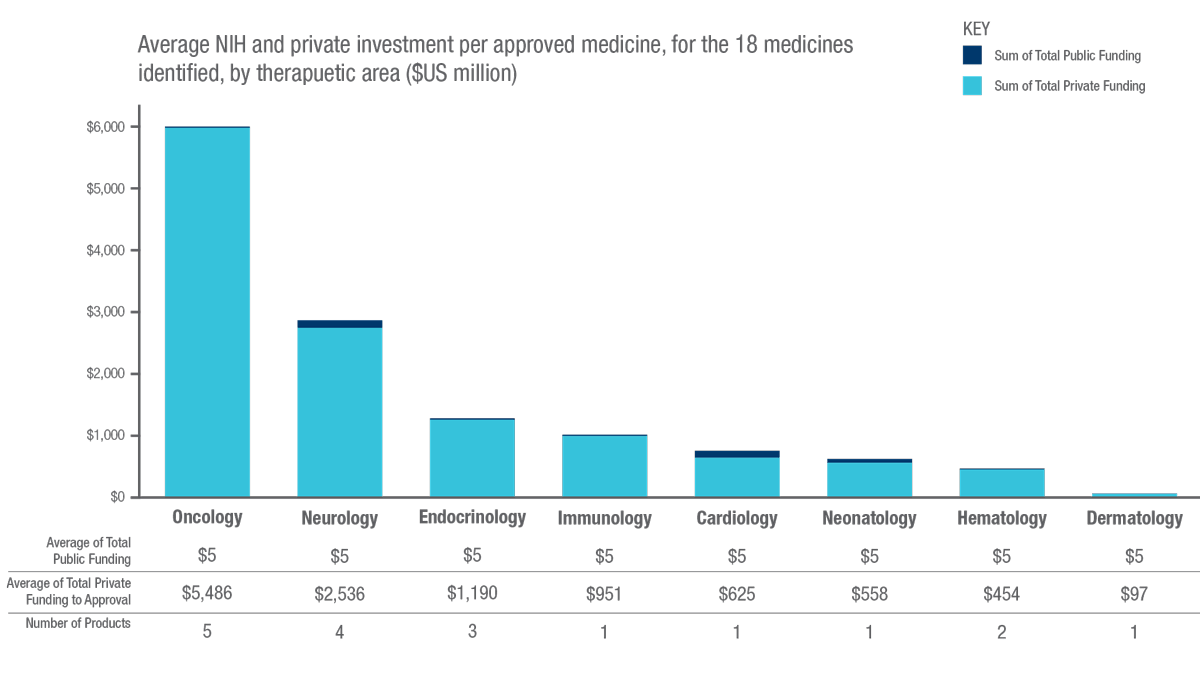Who pays to create new medicines?
Who pays to create new medicines?
The share of private money invested in developing new medicines approved by the FDA in 2020 exceeded the entire budget of the National Institutes of Health by about 6,500%, according to a new study by Vital Transformation.
Vital Transformation tracked more than 20,000 patents linked to NIH grants over a 20 year period, identifying those associated with clinical trials and approved medicines. VT quantified the public and private investments made for those investigational and approved medicines.
There were 23,230 NIH grants in the year 2000 that were linked by NIH-supported patents to 41 investigational drugs, only 18 of which gained FDA approval by 2020.
None of these medicines reached approval without significant private investment

In fact, total private investment for the 18 approved medicines exceeded NIH funding by orders of magnitude: $44.2 billion in private investment compared to $670 million in NIH. As industry’s share of total investment increased, so did the likelihood of approval.
These findings are consistent with scholarship describing the complementary roles of public and private R&D funding, and the significant long-term investments shouldered by industry with no guarantee of approval. In fact, just 12% of medicines in clinical development are ultimately approved by the FDA.
Pharma R&D spending is triple the entire NIH budget

The biopharmaceutical industry’s role in the U.S. research ecosystem is to undertake the clinical research required to advance basic science research into safe and effective treatments available to patients. In 2018, the biopharmaceutical industry invested $102 billion in R&D, most of which was focused on clinical research. Meanwhile, the entire NIH budget in 2018 was $35.4 billion, only 8% of which was focused directly on clinical research.

Private investment far exceeded NIH funding regardless of clinical area

Even for therapies not resulting in an FDA-approved medicine, private investment was much larger than NIH funding, regardless of when projects were terminated.
